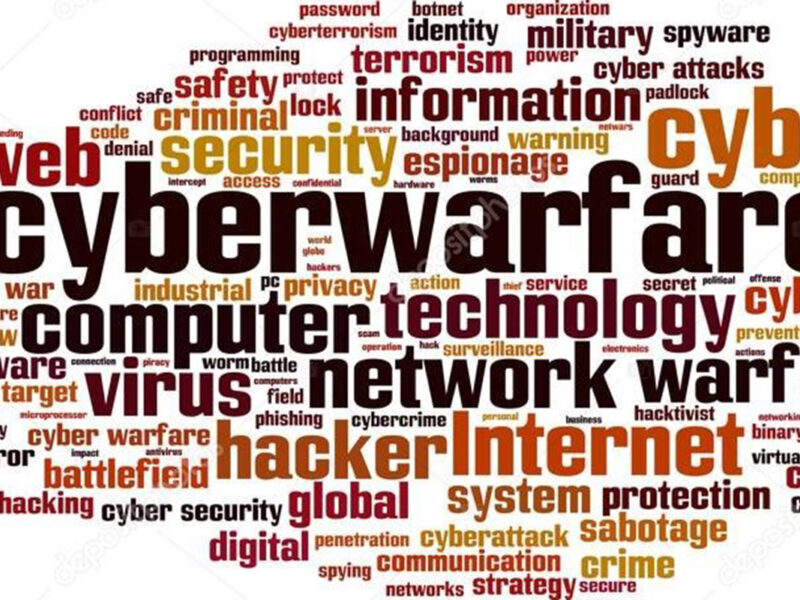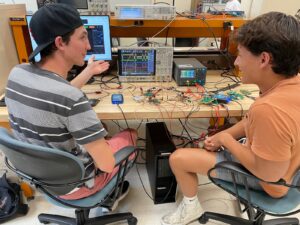RadioWare – Courseware and Lab Kit for Interference-Limited Communications and Electronic Defense

Overview
With the exploding use of the radio frequency (RF) spectrum for communications, sensing, positioning, public safety, and defense, there are many science, technology, engineering, and math (STEM) career opportunities, across industry and government, for learners who have an integrated understanding of practical radio systems that must operate in the presence of interference. This project focuses on developing educational materials and a low-cost laboratory kit to grow interest in the field and to prepare learners for these exciting and challenging careers. In particular, we aim to provide a solid foundation on the concepts, hardware, and software implementation aspects, testing and debugging, and performance evaluation of radio systems.

Our high-level approach is to modify a junior / senior elective course on communication systems, which is typical in electrical engineering curricula and involves lectures, problem sets, and concept exams. As described further below, we are incorporating three new elements:
- Real-world interference scenarios
- Experiential learning through hands-on laboratory exercises
- Competition and red teaming
In addition to course development, we are conducting formal course assessment to confirm that these elements contribute to student interest, confidence, and efficacy.
Real-World Interference Scenarios
All aspects of modern life have become increasingly dependent on the RF spectrum. The most visible examples are terrestrial and satellite communication networks that employ the latest global technology standards (5G NR, WiFi 6E), but there are many other use cases that are critical to our economy and national security, such as environmental sensing (NOAA satellites), positioning and timing (GPS system), and military communications and electronic defense. These applications require radios and system designs that can operate in the presence of interference in congested, and in some cases contested, spectrum environments.
Experiential Learning through Hands-On Labs
The reality is that interference cannot be fully addressed from just an analog circuit or a digital signal processing perspective. This makes traditional educational approaches inadequate for introductory courses on the subject, because learners either start with an analog RF circuits course or a communication theory course, and rarely develop a system-level, integrated perspective. Some aspects of radio systems are extremely difficult to convey without hands-on labs and the experience of tuning up a radio and making it work. The lab kit is a custom software-defined radio (SDR) that the students build up from hardware components (Analog Devices, Mini-Circuits), program in a high-level language (Python), and test with laboratory equipment (Keysight).
Competition and Red Teaming
Only 40% of intended STEM majors in the United States currently complete their degrees, and there is a shortfall of over one million college graduates relative to anticipated workforce needs. Students who do not complete their intended STEM major attribute their departure to various factors including a “cold” classroom and academic climate, difficulty with conceptual understanding, lack of self-efficacy, and a lack of interest in the material. This project addresses the contributing factors for this low completion rate with a redesigned course that combines well-established scenario-based learning methods with targeted self and peer assessment through alternative analysis. Specifically, students critique each other’s designs through red teaming, and instructional staff encourage competitions among lab groups on achieving the highest data rates, most robustness performance, and so forth.
Sponsors and Collaborators
The RadioWare project received funding from the Office of Naval Research (ONR) to help enhance pathways for STEM careers in the Navy, Marine Corps, and DoD more generally. We have engaged experts in Electronic Warfare from the Naval Surface Warfare Center (NSWC) Crane as well as the Army Research Lab (ARL) to advise on the interference scenarios, laboratory exercises, and student interactions.
RadioWare involves multiple investigators in the ND Wireless Institution, including J. Nicholas Laneman, Jonathan Chisum, and Bertrand Hochwald.

